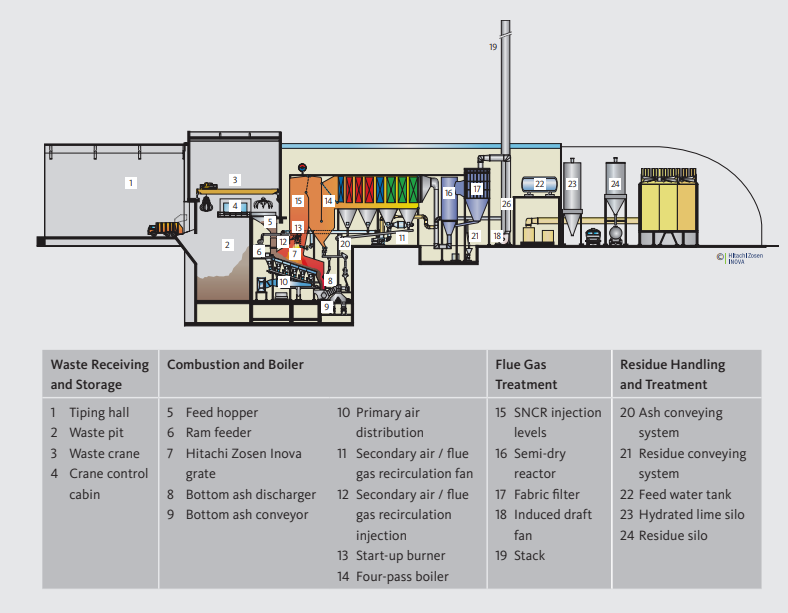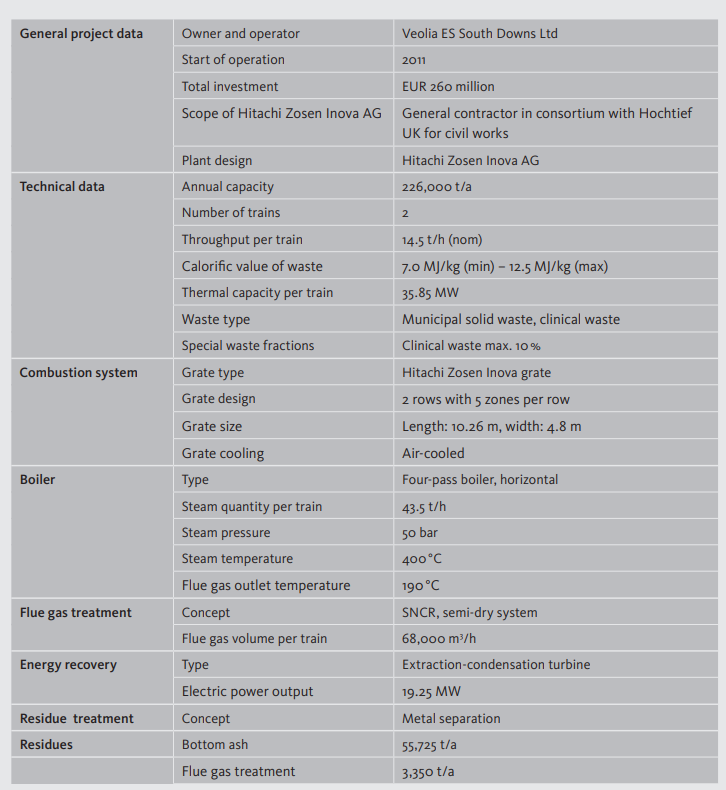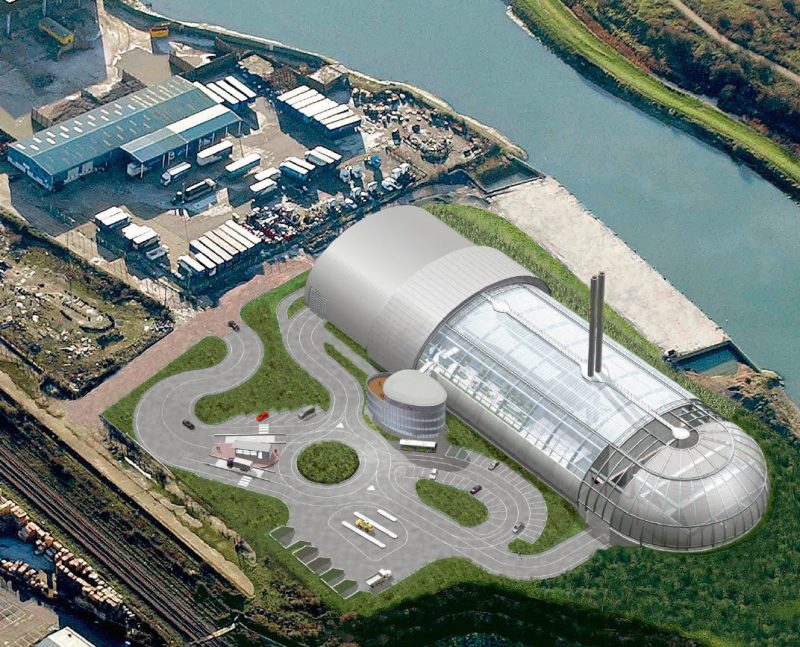Newhaven / UK
Newhaven / UK
Newhaven energy recovery facility – an integrated waste management solution for East Sussex and Brighton & Hove.
With a view to divert residual municipal waste from landfill, the energy recovery facility at Newhaven provides a state of the art integrated waste management solution for East Sussex County Council and Brighton & Hove City Council in the South East of England. The Waste to Energy plant will be capable of treating up to 210,000 tons a year of domestic waste and in so doing will export enough electricity to power the equivalent of more than 25,000 homes.
Planning for this project was achieved by the owner and operator, Veolia ES South Downs Ltd., a subsidiary of Veolia Environmental Services. Von Roll Inova, today’s Kanadevia Inova AG, has assumed the role of leader in a consortium with Hochtief UK and provides the complete electro-mechanical part of the facility. Construction started in 2008 and the facility will be handed-over in 2011.
Modern architecture minimises the visual impact.
The focus was on creating a high quality innovative proposal that recognises the character and sensitivity of its landscape setting by minimising the visual impact. The location and orientation of the building on the site, the curved profile of the building and the retention of the flood bunds along the river were all taken into consideration. Most of the building will be at a maximum height of 24 m with an arch rising to 27 m. This was achieved by burying major components of the plant below ground.
The technical set-up for safe waste treatment and economical energy recovery.
The plant has two identical process lines with state of the art technology, each one consisting of combustion system, boiler and flue gas treatment. It fully complies with the EU Waste Incineration Directive.
After kerbside separation of recyclable materials, the residual municipal waste is delivered by collecting vehicles and tipped into the bunker, where it is mixed by the waste crane. The waste is fed by the crane via the feed hopper into the combustion chamber. The reciprocating grate conveys it through the chamber while it is burned without any additional fuels. The preheated combustion air is injected below the grate. The process reduces the waste volume received by up to 90%. The bottom ash passes through the ash discharger onto an ash handling system where ferrous materials are recycled: all within enclosed areas. The remaining inert material is sent for processing and reuse within the construction industry for cover material or for disposal. The secondary air and recirculated flue gas are injected into the hot combustion gases resulting in intensive mixing and complete burnout of the gas. The gas passes through a 4-pass water tube boiler where it is cooled while the water of the closed steam condensate cycle is vaporised and superheated. In the first vertical pass, the NOx reduction is provided by the Selective Non Catalytic Reduction (SNCR) system using injected aqueous ammonia as the reducing agent.
After leaving the horizontal last pass of the boiler, further flue gas cleaning takes place in the semi-dry flue gas treatment system consisting of a reactor in combination with a fabric filter. This well proven technology removes the acidic pollutants by absorption on hydrated lime and heavy metals and organic pollutants (dioxins/furans) by adsorption on activated carbon. The small particles are removed in the fabric filter. The residues resulting from the flue gas treatment are then sent for safe disposal by an appropriate facility. The cleaned flue gas is finally released into the atmosphere through the twin stack. The whole process is under continuous control to ensure optimum combustion, low emissions, overall efficiency, and improved quality of the residual materials.
Turning waste into a resource.
The superheated steam is expanded in the steam condensing turbine. The produced electricity is fed into the national grid after plant service power is drawn. The Newhaven Energy Recovery Facility is designed to export around 16.5 megawatts of electricity, which is equivalent to powering more than 25,000 homes.


